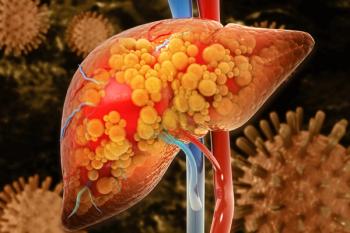
Patients With Mild to Moderate COPD Differ Widely in Respiratory Symptoms
Chronic obstructive pulmonary disease (COPD) is a heterogeneous disease, and patients can differ markedly in their rate of lung function decline and frequency of exacerbations. A recent study sought to determine what proportion of between-individual variability in symptoms can be explained by lung function versus all other observable characteristics.
Understanding more about this heterogeneity can help to formulate disease management strategies that provide individualized treatment, the researchers said. While heterogeneity in lung function decline and exacerbations have been previously studied, the extent of heterogeneity in symptoms and the factors associated with this heterogeneity are not well understood, they noted.
Using data from a population-based prospective cohort, they assessed the burden of self-reported respiratory symptoms in patients with persistent airflow limitation in order to characterize the variation in the occurrence of symptoms between individuals and to determine the proportion of between-individual variability in symptoms that can be explained by lung function vs all other observable characteristics.
In this study, 449 participants 40 years or older (53% male; mean age, 67 years) with persistent airflow limitation contributed 968 visits in total, and 89% of patients reported at least 1 symptom during the 3-year follow-up. Participants reported whether they experienced chronic coughing, phlegm, wheezing, or dyspnea during visits at 18-month intervals.
There was substantial heterogeneity in the individual-specific probabilities for the occurrence of symptoms. This heterogeneity was highest for wheeze and dyspnea (interquartile range [IQR] of probabilities, 0.13-0.78 and 0.19-0.81, respectively). Forced expiratory volume in 1 second (FEV1) explained 28% of the variation between individuals in the occurrence of dyspnea, 8% for phlegm, 3% for cough, and 2% for wheeze. All clinical characteristics of participants (including FEV1) explained between 26% of heterogeneity in the occurrence of cough and 49% for dyspnea.
Lung function explained the majority of between-individual variation only in the occurrence of any symptoms, and a much smaller proportion of variation in cough, phlegm, and wheeze. Commonly measured patient and disease characteristics explained very little heterogeneity in the occurrence of cough in particular. Varied symptoms may reflect the different causes of symptoms associated with COPD, the researchers said.
​​​​​​
Respiratory symptoms were very common, even though more than 90% of patients had mild-to-moderate COPD, and only 29% of them were diagnosed with COPD. Dyspnea was the most common symptom, followed by cough and wheeze. Individual-specific probabilities for the occurrence of symptoms were highly variable between individuals and for different symptoms. The IQR of probabilities was the largest for wheeze and dyspnea, indicating greater variability between individuals in the presence of these symptoms than for cough and phlegm.
The authors said their results extend the observations on symptom variability within individuals to variability between individuals in the occurrence of symptoms.
Tools for assessing COPD severity that involve the measurement of symptoms (such as the Global Initiative for Chronic Obstructive Lung Disease assessment tool) are likely to be more or less variable over time, depending on the symptom measured.
Reference
Johnson KM, Safari A, Tan WC, Bourbeau J, FitzGerald JM, Sadatsafavi M. Heterogeneity in the respiratory symptoms of patients with mild-to-moderate COPD [published online December 13, 2018]. Int J Chron Obstruct Pulmon Dis. doi: 10.2147/COPD.S184424.
Newsletter
Stay ahead of policy, cost, and value—subscribe to AJMC for expert insights at the intersection of clinical care and health economics.












































